Sony execs reveal mirrorless strategy in PhotoPlus Expo interview
posted Monday, November 13, 2017 at 5:54 PM EDT

At the recent PhotoPlus Expo in New York City's Javits Convention Center, IR founder and publisher Dave Etchells was fortunate to have the opportunity to interview the senior executives behind Sony's impressive Alpha camera line. Three key architects of the company's mirrorless strategy took Dave behind-the-scenes, sharing interesting insights into a development process that's produced a long line of spectacular cameras culminating in the Sony A7R III and A9, not to mention a staggering 23 E-mount lenses in just four years.
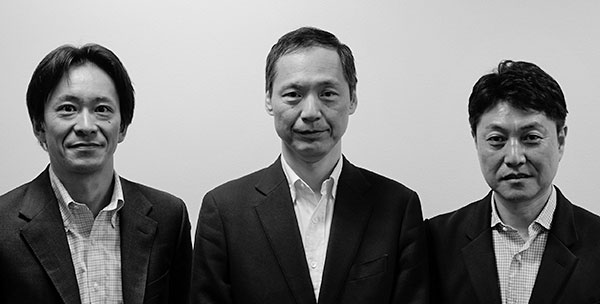
As well as Dave, three executives from Sony took part in this interview. From left to right above, they are Hiroyuki Matsushita, Yasuyuki Nagata and Hirokuni Miyai, all of whom are part of the Digital Imaging Group at Sony Imaging Products & Solutions Inc. Matsushita-san, who answered the majority of Dave's questions, is General Manager in the Product Planning Department, Product Planning Division, and therefore responsible for shaping Sony's overall digital imaging product plan. And at right, Miyai-san is General Manager, Design Department 1, Product Design Division 1, giving him overall responsibility for all camera bodies including both Alpha-series ILCs and compacts. And finally, at center in the photo above, Nagata-san is Senior General Manager of Business Unit 2, who has overall responsibility for Sony's digital imaging business as a whole.
Without any further ado, let's get right down to the interview!
Dave Etchells/Imaging Resource: Well, domo arigatou gozaimasu for coming. Thank you very much. I'll jump right in, as I have a lot of questions. I did try to trim them down a little bit, but I'm excited to have all of you here, because our readers are always very interested in, "What does the development process look like?" You know, how do things come together over how much time? No details, no details, though, I know...
<laughter>
Dave Etchells: So taking advantage of all of you being here, going back to the A9 as an example, how long before it was released did you begin planning that, or were you working towards it?
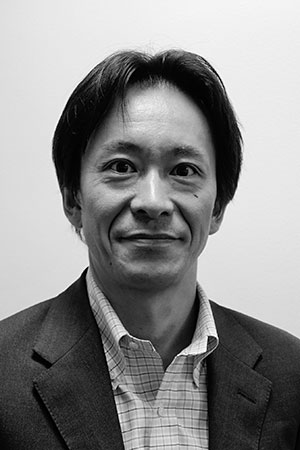
General Manager
Product Planning Department
Product Planning Division
Digital Imaging Group
Sony Imaging Products & Solutions Inc.
Hiroyuki Matsushita/Sony: So actually, we are not able to tell [you] from when, or how long we are taking for [development] like that.
Dave Etchells: Oh really? No?
Hiroyuki Matsushita: Yeah.
Dave Etchells: Oh no, there go half my questions! :-(
Hirokuni Miyai/Sony: [It's] really unfortunate; we want to say, but it's not possible for us to say.
Hiroyuki Matsushita: But let me say that Sony Engineering [is] continuously working.
Dave Etchells: You're always working, and I know it’s not even like a specific model. You're working on technologies, many technologies. And then it's a matter of you get to a point where it comes together into a new model? <pauses> I'm trying to think how to ask questions without talking about timing...
Yasuyuki Nagata/Sony: Yeah, because we, our product development, is not technology-driven.
Dave Etchells: Ah, really?
Yasuyuki Nagata: Because we are fundamentally getting the voice from customers first and try to find out what is important for the customers, what we should do, what we should create as [an] offer. Therefore, without considering those technological development schedules, we are thinking [of] our product roadmap when, how, what we should offer to our customers. That is coming first.
Dave Etchells: Yeah, yeah.
Yasuyuki Nagata: So [it is] not dependent on the technology itself.
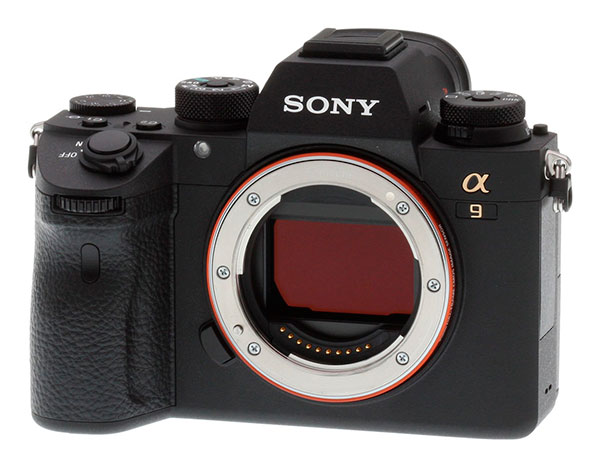
Dave Etchells: Ok, so you have requirements from customers and with something like the A9, you know, full-frame, 24 megapixel, 20 shots per second… That's a very significant advance in terms of the technology. So certainly you all have been trying... <pauses, looks around at execs> - He keeps looking at me like, what are you gonna say, what are you gonna ask me?
<laughter>
Dave Etchells: <laughs> Without talking about specific time-frames, is it something you can kind of look and see that, OK, the processors, they've been getting faster like this, there's like a curve, and so then you can project and say OK, it’s increasing like… <“such and such” hand motion> Whenever you decided that, you could say, OK in 2017 we will be able to do the 20 frames a second kind of thing. So is it true that in order to be able to plan you have to kind of project or extrapolate where you will be at some point in time?
Hiroyuki Matsushita: So, recently we have to consider a wider view. Not only the speed, we have to consider the dual characteristics of the camera. That's why not only the resolution, but processing for resolution. And not only for the speed, so we have to consider the wider view. That's why we cannot say [it is a] specific projection of each.
Dave Etchells: Ah, yes OK. There are many different aspects. For instance, autofocus is certainly a very big function, and it's very different processing than the image processing.
Hiroyuki Matsushita: And of course we have to prioritize the "camera-ness".
Dave Etchells: “Camera-ness?”
Hiroyuki Matsushita: "Camera-ness," yes. That's the key of the camera.
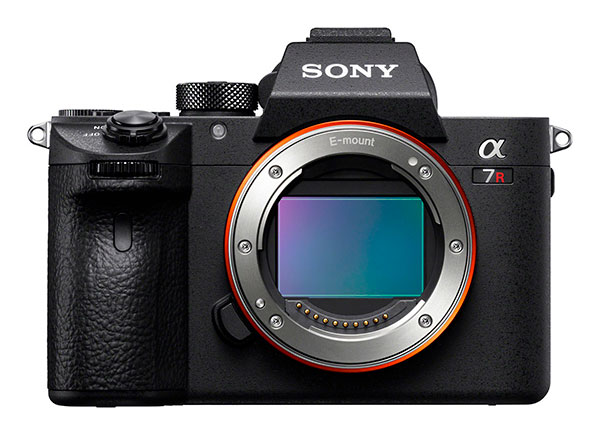
Dave Etchells: Ah - so it’s not just technical ability, you also prioritize how the camera feels and works like a camera.
We’re very interested that the A7R III has the same sensor as the A7R II, yet you've extracted so much more performance from it. Maybe you can’t answer this but I will ask the question anyway: We're curious whether back when the A7R Mark II was released, if you thinking back even then that "Ah, we're, you know, in a couple of years we will have this additional capability," so were you thinking even when you released the A7R II, what the A7R III would look like?
Yasuyuki Nagata: <laughs>
Hiroyuki Matsushita: The answer is "No." Because we want to hear customer’s the voice. So once we launched Alpha 7R Mark II... of course, even before we launch Mark II we heard a lot of voices of customers, but when we had that model, then we need to get the feedback from customers for what we should do for third generation. And surprisingly, when we have that kind of information, yes, some customers want even higher megapixels. But a majority of customers requested different areas of development such as longer battery life, for instance…
Dave Etchells: Ah, yeah...
Hiroyuki Matsushita: …or faster autofocus, or even the picture quality in low-light conditions. So considering that kind of feedback, we decided which way we should go for the third generation, based upon the customers of our Alpha 7R-series.
Dave Etchells: Mmm, yeah, I understand. So you needed to see what the reaction was to that product, and it's only then that you knew or could begin to learn what the direction for the next one will be.
Yasuyuki Nagata: Right, right, right.
Dave Etchells: Yeah, that makes sense. So you have some sense of things that are coming in terms of what you're able to do. But you can't just sit here and say "Well, in five years we're going to make this camera,” because you don't know what the customer’s demands will be.
Hiroyuki Matsushita: That would be an easier job for all of us, but...
Dave Etchells: Easier job!?
Hiroyuki Matsushita: ...but the customer is not so easy, so...
Dave Etchells: Haha, yes, customers are less predictable than technology!
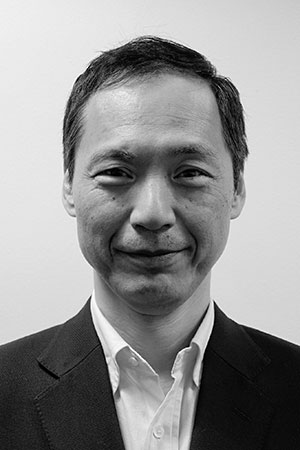
Senior General Manager
Business Unit 2
Digital Imaging Group
Sony Imaging Products & Solutions, Inc.
Yasuyuki Nagata: It was faster than we expected.
Dave Etchells: Faster? The technology developed faster?
Yasuyuki Nagata: Technologically, as well as the customers’ intention…
Dave Etchells: Ah, so...
Yasuyuki Nagata: …market change.
Dave Etchells: So everything moved faster than you thought it would.
Yasuyuki Nagata: Right.
Dave Etchells: The customer expectations, the technology you use or that became available, yeah.
Hiroyuki Matsushita: Yeah. Competing. <laughs> So even if we have five years, ten years roadmap of technology, maybe that makes no sense.
Dave Etchells: Because you could be thinking "Oh, we'll have a 200-megapixel sensor," but that's maybe not what customers want.
Yasuyuki Nagata: Right.
Dave Etchells: They want 42 megapixels, but with better autofocus, better battery life, etc.
We were actually a little surprised that you stayed in the same body as the A7R II, that you didn't change it. We liked the A9 body very much, the grip and everything. We really liked the ergonomics of that. So we were a little surprised. Can you say anything about what that decision was like? And was it a case that you didn't, you hadn't put the A9 out yet so you didn't know the reaction?
Hiroyuki Matsushita: Basically, the customers’ profile, it's much wider for A7R-series than A9.
Dave Etchells: Ah, yes!...
Hiroyuki Matsushita: So those wider range of customers include male, female, young, senior… a lot of customers. So basically those wider range of customers prefer smaller, lighter body. Also most of the customers appreciated or valued the size of A7R series, Mark I, Mark II. Therefore rather than making the body bigger with a new, bigger battery, we made a huge effort to maintain body size even with bigger battery.
Dave Etchells: Ah, so you had to shrink everything else.
Yasuyuki Nagata: Yes. Totally redesigned structure.
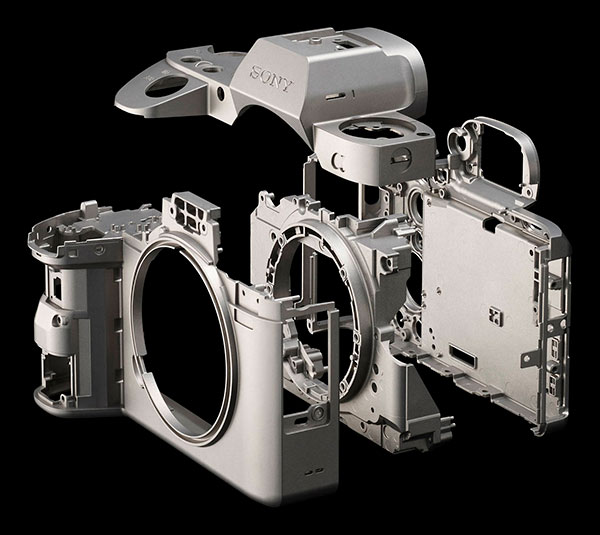
Dave Etchells: With that much more density and a faster processor, it must have been difficult handling thermal issues and the like.
Hiroyuki Matsushita: And this new model has a new shutter unit, which is bigger than the old one.
Yasuyuki Nagata: Bigger shutter unit, bigger battery.
Hiroyuki Matsushita: Yeah, so with bigger shutter unit and bigger battery, so we.…
Dave Etchells: You shrunk all the electronics, yeah. And the electronics guys were going "Arrgghhhhhhh!"
<laughter>
Yasuyuki Nagata: Exactly.
Hiroyuki Matsushita: It's hard work for the electronics guys.
Dave Etchells: That's really very interesting. The shutter is new, and that is something that you, and in two other briefings we had with Sony earlier, made a big point of: the shutter and its lower vibration lvels.
Hiroyuki Matsushita: Right.
Dave Etchells: They said something in the earlier briefing about a braking mechanism?
Hiroyuki Matsushita: Right.
Dave Etchells: That is because the shutter has to travel very fast until it gets to the bottom of the frame, but then you need to slow it down very rapidly.
Hiroyuki Matsushita: Yep.
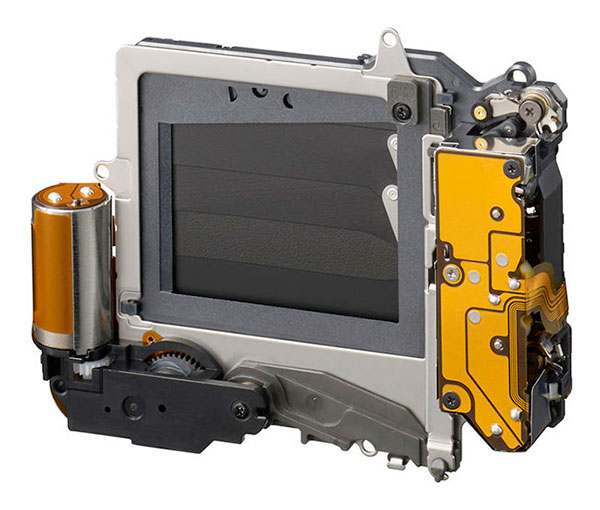
[Ed. Note: This is the cause of “shutter shock”, which Imaging Resource was the first to identify as an issue in the original Olympus E-P1. We’re not sure why it would be a particular issue with mirrorless cameras, but the first shutter curtain slamming into its seated position at the bottom of its travel causes vibrations in the camera body that can be very hard to damp out or prevent -- in some cases, even when the camera is mounted on a tripod. Sony’s innovation in the A7R III shutter is that they have a braking mechanism that slows the shutter curtain just before it hits bottom, greatly reducing vibrations. Modern mirrorless shutters have improved in this respect, but it seems that Sony has taken vibration reduction up another notch in the A7R III.]
Dave Etchells: So was that part of the increase in size of the mechanism, you needed room to decelerate...
Hiroyuki Matsushita: Room, yes, exactly.
Dave Etchells: ...at the bottom.
Hiroyuki Matsushita: That's why more getting bigger in the shutter unit.
Dave Etchells: Yeah, yeah.
Hiroyuki Matsushita: But we did prioritize it because that braking system is the required feeling, the shutter feeling.
Dave Etchells: Ah, yeah. It seems like that must have been something you were working on for a while, on your own. Because it’s not something that people are coming back to you and saying there is too much shutter vibration, affecting the image quality.
<laughter>
Hiroyuki Matsushita: That's a case where we are going one way, and we can continue to develop in that way, so [it's] not necessary to worry about if the customer's case changes or something.
Dave Etchells: Some things like that, yeah, if it's just going to work better, you don't need the customer to tell you to do that.
Yasuyuki Nagata: Yeah.
Dave Etchells: This is getting really very specific about technology as opposed to more general questions about development, but we were a little surprised that on the A9 and now the A7R Mark III that you have the two types of SD cards. One slot is UHS-II and the other is only UHS-I. What led to that? What sort of limitation was it that you couldn't make both slots UHS-II? Was it you didn't have enough fast I/O coming out of the processor, or was it a thermal thing, or do you know?
Hiroyuki Matsushita: First of all we want to offer wider option to customers, so not many, not all customers are going for UHS-II. Some customers still sticking with Memory Stick or SD card, UHS-I, so...
Dave Etchells: Ahhh, so, it sounds like a significant part of that was, UHS-II is backwards-compatible with UHS-I, but you have many customers with, or customers with a lot of Memory Sticks, and so you wanted to be able to allow them to continue to use them going forward.
Hiroyuki Matsushita: Right.
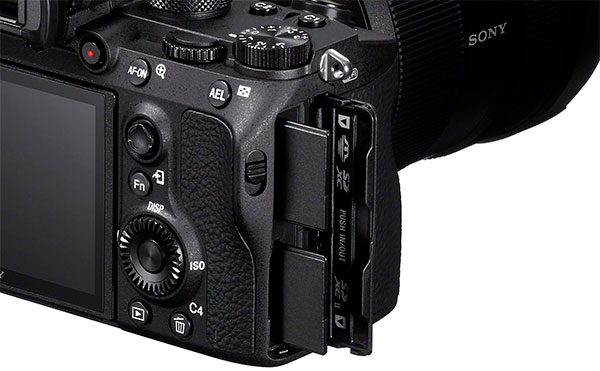
Dave Etchells: We've also been surprised that, while XQD is a Sony-developed technology, we haven’t seen it showing up in some of these cameras.
Hiroyuki Matsushita: XQD is mainly now used by professional video cameras.
Dave Etchells: Video, right.
Hiroyuki Matsushita: And accessibility of that media through the world is still limited compared to SD memory card. And as we mentioned, customers of Alpha 7R Mark III is wider.
Dave Etchells: Right, a very broad customer base.
Hiroyuki Matsushita: So we want to ensure the access to the media to purchase, that's why.
Dave Etchells: Ah, I see. It'd be more useful for them, that broader customer base, to have two SD cards than to have one slot for a memory card they can't even find locally. I would still have argued that the A9 would've been a good place to put an XQD, because that is a very professional audience, but...
Yeah, it's interesting to hear you say the A7R III, or the A7R line in general, is much broader than that for the A9. That makes sense to me. When I look at the A7R Mark III, it just seems like the universal camera. You know, it's a camera that I'm attracted to myself because it has resolution, but it's also fast enough for what I would need. (I don't necessarily need A9 speed.) It just seems like it's a very well-balanced product.
Yasuyuki Nagata: So next time when we see you, you are with your own A7R Mark III then.
<laughter>
Hiroyuki Matsushita: That's a very special comment to us. We will share that sentiment!
Dave Etchells: Yes, please feel free to share that with the engineers and whoever, because I think that's the word that I would use, “balanced.”
And the A7R III's got phenomenal autofocus! At the event, we brought some other cameras to shoot side-by-side with it, and so I had a D850 and one of my guys had a 5D Mark IV and we brought the Fuji GFX. And when I used the Mark III to shoot portraits, I mean, it followed the model's eye everywhere. It was perfect. Much easier than trying to keep an autofocus point in just the right place.
[Ed. Note: I had a detailed question here about how the A7R III manages to get 15 bits of dynamic range, while only having 14 bits of analog to digital resolution available. I’m pretty certain that it’s because the digitization is non-linear, using a gamma curve. Unfortunately, the executives we were speaking with felt they weren’t able to discuss the details of this with us. I’ve thought more about this since then, though, and have a pretty good idea of how it’s done; stay tuned for a subsequent article about this at some point…]
Dave Etchells: Given the improvements in processing that led to the increase in dynamic range between the the A7R II and A7R III, will we be seeing the same kind of dynamic range improvements in APS-C cameras, too? Of course they are smaller sensors, but will we see a similar advance compared to current models?
Hiroyuki Matsushita: Yes, from the engineering point of view, we study and consider how to improve the dynamic range for several image sensors, not only the full-frame and APS-C but also the one-inch.
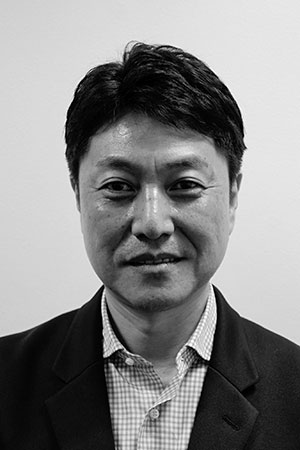
General Manager
Design Department 1
Product Design Division 1
Digital Imaging Group
Sony Imaging Products & Solutions Inc.
Hirokuni Miyai: But even if that is technically possible, we need to make some balance between dynamic range or resolution or other aspect of the picture quality, so we need to consider that way to make something final.
Dave Etchells: Yeah, on an APS-C camera you may have more demand for more megapixels, so new technology maybe you would be able to keep dynamic range the same even though the megapixels increased.
Hiroyuki Matsushita: Right
Dave Etchells: When you look into the future, what do you see as being the key technologies? I keep coming back to technology. I know it starts with the customer, but what do you see as being the areas that you really need to focus on the most to improve the product, to be able to meet the future demands of the customers?
Hiroyuki Matsushita: Rather than technology itself, we are trying to see how customer's demand changes, which is not 100% clear to us yet. But what we are currently trying to do is, after some core traditional camera function parts are satisfied, [to see] which sort of technology we should offer to our customers. But to get that answer we still need more customers’ voices. Before now, we didn’t have so many professional or photo enthusiast customers in our user base, therefore, the voice we can get is limited. But now with more and more customers including professionals, we are getting more information, and that helps us to make more decision to set our goals.
Hiroyuki Matsushita: And so we are not clear yet which way we should go.
Dave Etchells: That's interesting; what you are saying is that your customer base has changed, is currently changing, and so now you can get more feedback, but also a different kind of feedback. And it's interesting what you said: that once the basic camera functions are satisfied, the question is what you do next. I guess there are all kinds of things you could do, I mean, computational photography, or just, you know, let the user sort of wave the camera around and get, 500 megapixels of image data or whatever, but you need to see how the demand...
Hiroyuki Matsushita: Yeah, demand.
Dave Etchells: But I hear you being much more driven by the customer and what the market is telling you. This is more just a curiosity question, but...
Hirokuni Miyai: Before we move on, there's just one [other] thing. Of course, we are listening to our customers, but we are not just hearing what they want. We are observing customers, current customers' behavior, and from that we should see somewhere that they're not satisfied. And to satisfy that point, we use our technology to offer something to support their photography or reduce their pain point. So the way we approach is listening to the customers, but we are not simply offering what they request.
Dave Etchells: Right, you’re seeing what they need, you're observing them to see what they need. That they may not know what specifically to ask for yet, though.
Hirokuni Miyai: And we try to consider, which kind of technology we can utilize to satisfy their point. So that might not be just one solution, we have a lot of ways to support that, but we are making consideration. We consider what is the best way to satisfy their point.
Dave Etchells: Yeah, yeah. And certainly I think the big thing that's happening in the industry right now is autofocus. From my perspective, image quality is good enough that you know, people can talk about 15 stops or 14, but really, for many people and I'd say almost more for consumers than professionals, autofocus has become more important. For the camera to be able to intelligently figure out "What is the subject?" and decide "Oh, that's an eye. I should focus on it," that sort of thing.
Hiroyuki Matsushita: Exactly.
Dave Etchells: And actually, it’s consumers who need even more of that.
Hiroyuki Matsushita: Right.
Dave Etchells: The processor technology has been a huge part of what you've been able to do. I'm curious, where is that in the company? Is there a group within the camera division that does the chip design, or is there a general Sony microelectronics group that you work with?
Hiroyuki Matsushita: Inside our team.
Dave Etchells: Inside the camera group?
Hiroyuki Matsushita: Yes. Because the processor is a key, key.
Dave Etchells: It's really fundamental to it.
Hiroyuki Matsushita: Yeah. Our team develops and designs it.
Dave Etchells: That takes a huge investment, because integrated circuit processor development is, very, very labor-intensive. It takes many people and a great deal of resources.
Hiroyuki Matsushita: Right. Takes the time and a lot of people working for...
Yasuyuki Nagata: We have an imaging platform which includes the lens technology, imager technology, LSI technology, even software we have in digital imaging.
Hiroyuki Matsushita: Yes...
Dave Etchells: All within the imaging group. So really the only part that's not really internal to the imaging group is the sensors. They're a separate business group, but you collaborate with them?
Hiroyuki Matsushita: Yes, yes.
Dave Etchells: That seems to me to a very, very strong advantage for Sony. Other companies can buy Sony sensors, but to be able to do things like take advantage of the stacked-chip technology, you have to change the whole architecture of your processor.
Switching to lenses, the presentation Tuesday night pointed out that you've released 23 E-mount lenses in just four years. We were kind of blown away when we thought about that, you know. It's like "Oh, yeah, Sony's got more lenses now," but when you think about it, that's five brand-new lens designs a year. How have you been able to release so many in that short time? Did you pull in resources from maybe your video lens division? And did you decide that you have to really focus on the full-frame, so concentrated a lot of resources there, or…? I’m curious how you did that, and also curious if that pace will continue going forward now.
Yasuyuki Nagata: We have a lot of genius engineers. <laughs>
Dave Etchells: Smart people and lots of coffee!
Hiroyuki Matsushita: Twice [the] speed. <laughs>
Dave Etchells: Yeah, and of course I mean, the interesting question you probably can't answer is how many people do you have doing that.
Hiroyuki Matsushita: Yeah, that's an engineering secret.
Dave Etchells: Yeah. In the lens design team, are many of those people that came from Minolta, way back when? Or are they...
Hiroyuki Matsushita: Yeah, we have some...
Dave Etchells: Ah, some, still, but most of them grew within Sony or were hired.
When you look at your current lens lineup, what areas do you think need strengthening the most? You now have a fairly broad line, but what do you feel the customers are saying they want? Obviously, big telephoto, which you just made a development announcement about, so we know that...
<laughter>
Dave Etchells: ...but yeah, what, where do you think the demand is, what are people asking for?
Hiroyuki Matsushita: This is also is where we are hearing the customer's voice. And so when we launched Alpha 7, the first in 2013, so we started with an f/4 zoom lens, and an f/1.8 type of lens...
Dave Etchells: The primes, yeah.
Hiroyuki Matsushita: Compactness is important, we thought. But after we launched the Alpha 7R II, a lot of people requested that we definitely need the f/2.8 type of zoom lenses.
Hiroyuki Matsushita: That's why we made the f/2.8 trinity, even the 100-400 type of nice lenses, and wide too, 12-24 type of wide lenses. And after we launched the Alpha 9, as you know, there were a lot of voices we heard, so...
Yasuyuki Nagata: <laughs>
Hiroyuki Matsushita: That's why we this time announced the new super-telephoto...
Dave Etchells: Ah, so it was primarily the A9 audience that was clamoring for the 400mm, there are other lenses now that audience is also asking for.
Yasuyuki Nagata: Right.
Dave Etchells: Going from the A7R to the A7R II, it's like you got a whole new group of photographers coming to the platform.
Hiroyuki Matsushita: Basically we have a lot of landscape and portrait.
Dave Etchells: And so those people, landscape and portrait, they wanted wide aperture and they weren't so concerned about small and portable. My sense was the A7R II brought a lot more professional users onto the platform.
Hiroyuki Matsushita: Yes, you are right.
Dave Etchells: This is kind of a business question, I'm skipping ahead a little bit, but what's been the biggest challenges for you in getting people to move to mirrorless and mirrorless full-frame?
Hiroyuki Matsushita: That has been the same from the beginning when we started to promote mirrorless. We try to demonstrate what is the benefit of mirrorless over traditional DSLR, and we continue that action. Now, some customers, including professionals, appreciate that point and are moving to mirrorless, and that is actually happening, and as we presented earlier today, the mirrorless portion in the market is becoming bigger and bigger. And that is happening not only for the entry type of mirrorless, but also the full-frame mirrorless. So people including professionals are shifting to mirrorless, so that is happening.
Dave Etchells: So, the story has been the same, or your message has been the same from the beginning about the benefits of mirrorless, and it's now that people are finally recognizing that those are benefits.
Hiroyuki Matsushita: Yeah, and on top of the initial claims of mirrorless benefit, now we have special functions such as eye autofocus which is unique to mirrorless, and that function is highly appreciated by professional customers and that is accelerating the shift.
Dave Etchells: Yeah, I think autofocus in general was a big challenge for mirrorless for a long time, people liked compact cameras, but the autofocus performance wasn't equivalent. But now it is catching up and in some ways going beyond.
This is another kind-of curiosity question, but within the group is there much overlap between the teams that are working on the RX, sub-frame Alpha, and full-frame Alpha, or are they fairly distinct groups?
Yasuyuki Nagata: One team, one team. One big team.
Dave Etchells: One group.
Yasuyuki Nagata: Yeah, we do not divide the team.
Hirokuni Miyai: <gesturing> I do both, he does both. <Indicates that both he and Matsushita-san work on both compact and Alpha product lines>
Dave Etchells: So you don't have a team over here that's designing RX-models, and they've got, you know, a mechanical engineer that does bodies, and someone else that does such and such. It's just the team as a whole, you have mechanical designers and then they'll work on one project or another, as needed.
Yasuyuki Nagata: Mmm-hmm. Yeah. Yeah.
Dave Etchells: I'm curious too, how much the video products are separate, or are they also under your part of the organization?
Hiroyuki Matsushita: Digital imaging group and the Handycam for consumer video cameras are completely the same group. And we do have professional video camera group, which is also under SIPS, which is the same company.
Dave Etchells: Ah, Sony Imaging Products and Solutions, yeah.
Hiroyuki Matsushita: The final product is totally different but the basic technology is based on the same platform.
Dave Etchells: So, much of it is shared, but with somewhat different requirements on still imaging. But the image processing technology, the processor chips themselves, can be shared. Have there been things that appeared as issues or solutions on the video side that have subsequently come over to the still cameras?
Hiroyuki Matsushita: One example is the super slow-motion function which is available now in the RX100 cameras. That technology's base is cascaded down from professional video.
Dave Etchells: Ah, interesting! I didn't realize that; so the very high frame-rate video came down from there.
Yasuyuki Nagata: Right.
Dave Etchells: There are multiple aspects to that (meaning high frame-rate video). One is getting the data off of the chip fast enough, which means having a sensor that can read out quickly enough, but then there's the processor, and I guess that was a requirement that came from the pro video side.
Hiroyuki Matsushita: Yeah, that was typically coming from the broadcasting video side, but also we think that it might be an interesting feature for consumers. For instance, the video makesrs, not videographers, but the YouTubers would get some enjoyable video shooting. So that's why we offered that to RX-series.
Dave Etchells: And that coming over, was that a matter of a processor design that they had to support that in the pro video group, or...
Hiroyuki Matsushita: It wasn’t necessary to be the broadcast processor, but more for the concept of the feature.
Dave Etchells: Ah, just the concept of the feature. I'm interested to talk about how Sony, at least what we see in the US, has been making a very big push with Pro Services. Is this push a global thing, repeated in other countries, or is that more something just here in the United States?
Hiroyuki Matsushita: We are establishing professional support programs throughout the world, but the content of the program itself is different between countries and regions. And also the timing for them is different. But the United States is one of the earliest regions where we started to offer those professional options.
Dave Etchells: I am also wondering about the evolution of your products. Your line started with consumer cameras, became higher-end full frame mirrorless, and now we have the A9 which is very much a professional product. Was that something you saw from the beginning, was that kind of your master plan to say we'll start here and then approach the pro market, or was it more that you realized "Oh, we can do this now!"
<laughter>
Dave Etchells: Let's go get some pros!
Hiroyuki Matsushita: Because everyone who does serious photography has respected professional photographers, they are always watching what photos those professionals are taking, or which kind of gear they are using. So we thought that if we can have our cameras used by professionals, we then have more credibility or reliability to everyone in this industry.
Dave Etchells: We sometimes call that a "halo effect,” meaning if it's being used there, then "Oh, it's something I should consider seriously" or "I want to have it because I see pros using it.”
Hiroyuki Matsushita: Also that if we set the goal internally to get professional users to be our customers, that is giving our engineers <laughs> a very high goal or challenge to meet professional quality or make professional products. So that is the best way to make our products even better.
Dave Etchells: Are you saying also is it even almost a psychological thing with the engineers? It's like "Oh, we have to be able to do that!"
Yasuyuki Nagata: Not necessarily [psychological], because if as a company we set a goal that we are trying to approach equipment for professionals, everyone in that company considers we should do our best to ensure our products have the highest professional standard. So that is everyone's mutual goal setting, I think.
Dave Etchells: And of course, besides the halo effect, as you say, you're getting more, and much richer feedback than before, and also feedback at a higher level in terms of the requirements.
Hiroyuki Matsushita: Right.
Dave Etchells: A question about lenses, how different are the design criteria for video lenses as opposed to still image lenses? What differences are there in terms of the criteria or constraints?
Hiroyuki Matsushita: There's no criteria, basically… So for E-mount lenses, being our Alpha camera mount, meant that we would get a mix of professionals using it for video, but also lower-end consumers using it for stills. So from the initial stage of development we always think about the video function in tandem with still shooting, especially the way we think about how the actuator should move smoothly and silently. That’s the starting point. And the latest lenses also consider the feel of manual focusing.
Maybe some journalist like you or some professionals said that the first-stage lenses like APS-C 18-105mm, for example, is really good for video shooting with our Alpha 6500 or the like. But it isn't... honestly speaking it's not good for the feeling of the manual focus. But the current latest models we really consider the “feeling” of the manual.
Dave Etchells: Because professional videographers are pulling focus manually.
Hiroyuki Matsushita: Yes. So it means that basically all E-mount lenses always consider the video function, the video feeling, from the start. Furthermore, some lenses should highlight autofocus speed as really important, some lenses should maybe focus more on bokeh quality, etc.
Dave Etchells: Ah, yes, you can optimize different things for different lenses and uses. Yeah, so there's some lenses that you would use for portrait, but they're not sports lenses, they have very large focus elements...
Hiroyuki Matsushita: Yes, yes, yes.
Dave Etchells: ...very large moving elements. So I guess it's not like there's a negative tradeoff to make the lens video-capable or video-friendly. It might be a bit more expensive because of the actuators or whatever, but if it's a good video lens, it is also a good still lens.
Hiroyuki Matsushita: Yes.
Dave Etchells: Well, we’re more than out of time, and as always, it’s been an extremely interesting conversation. Thank you again very much for your time, domo arigatou gozaimasu!
(All): Thank you too!